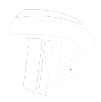(1) drying process of ink
In tinplate printing production, ink drying is a complex physical and chemical reaction process. It is necessary to control the drying speed of ink reasonably and master the physical and chemical mechanism of ink drying, so as to effectively carry out rapid printing operation and ensure product quality. Too fast drying of the ink will reduce the normal transmission performance of the ink and affect the normal operation of the production; it will result in the deficiency of the imprint, the light of the ink color, the ink drying on the surface of the printing plate and the ink roller, which will block the down ink in the transmission; it will cause the dry layer of the printing plate to expand outwards; it will cause the increase of the ink adsorption and the dirty blank part due to the excessive amount of desiccant. And ink drying too slow can cause overprinter difficulties, adhesion, adhesion, etc., firmness reduction; easy to cause scratches in the transmission process. So ink drying speed to be appropriate, too fast and too slow are adverse.
(2) special structure of printing equipment
Because of the difference of substrate, the auxiliary mechanism of tinplate press is different from that of paper offset press. Tinplate is insoluble in water and does not absorb solvent, so the printing ink needs to be baked at high temperature to make the solvent evaporate and the conjunctiva solidify. Therefore, the printing process unit generally needs to be equipped with a drying room. The whole automatic tinplate printing line is generally more than 50 meters long, with the characteristics of precision and huge. In addition, the sheet metal printing machine is controlled by magnet split sheet and double sheet. The high hardness of sheet metal also determines that the advanced continuous iron conveying structure cannot be used in the printing process, which is different from the offset printing machine in the structure of pushing section, alignment and stacking section.



